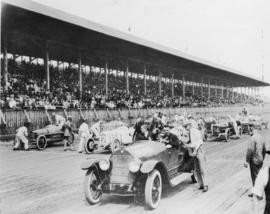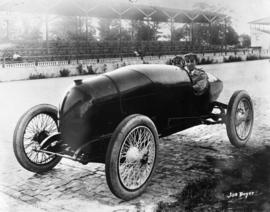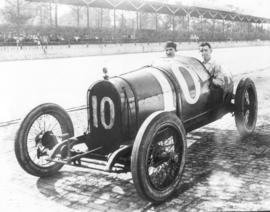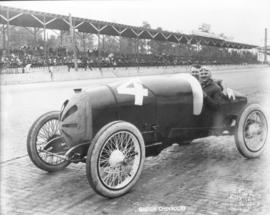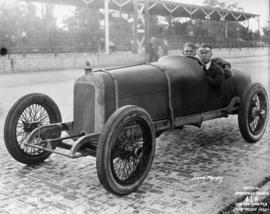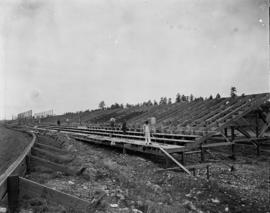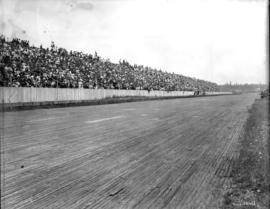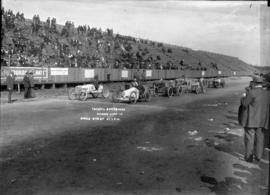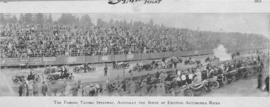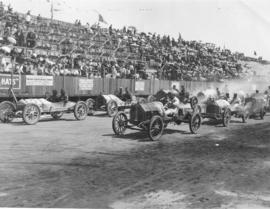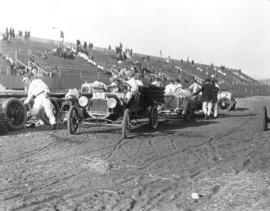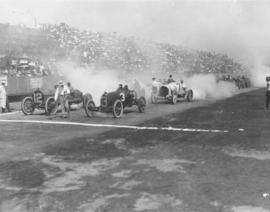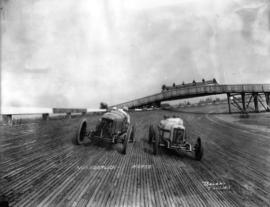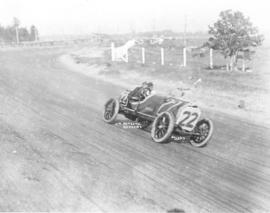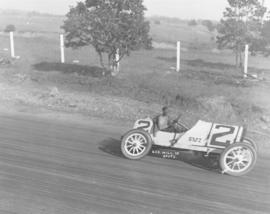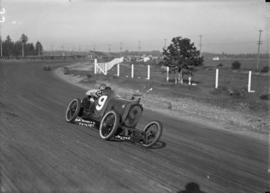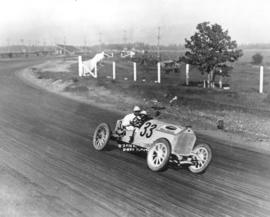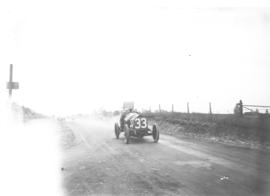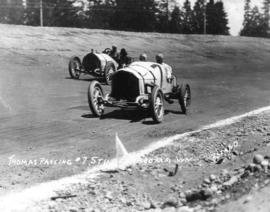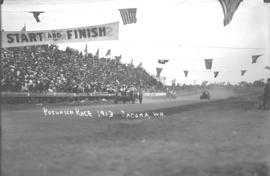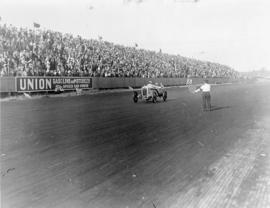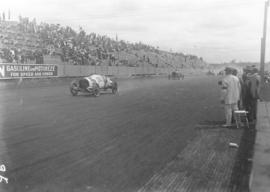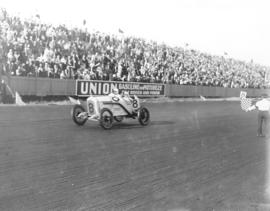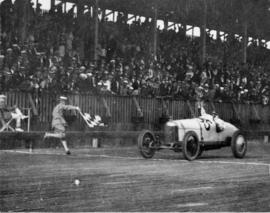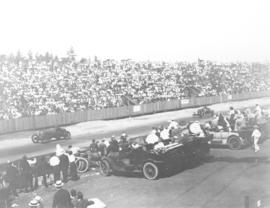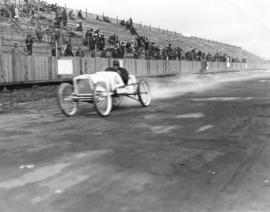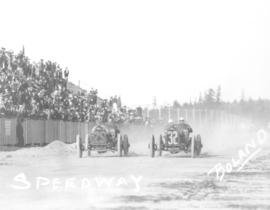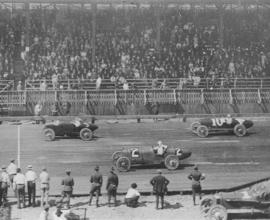- Item
- 1922-07-04
Part of Marvin Boland Photographs
On July 4th 1922, thirty thousand fans crowded into the stands at the Tacoma Speedway to watch what turned out to be the last car race held at the Tacoma track. Ten drivers competed in the 250-mile race. The cars are lining up behind the pace car, driven by Barney Oldfield, prior to the checkered flag. Lined up are (l to r): front row- Tommy Milton #8 Leach Special, Harry Hartz #12 Duesenberg, Jimmy Murphy #35 Murphy Special; 2nd row- Joe Thomas #10 Duesenberg, Roscoe Sarles in the #31 Duesenberg, Cliff Durant in the #34 Durant Special; 3rd row- "Howdy" Wilcox in the #16 Puegeot, Art Klein in the #2 Frontenac, Ralph Mulford in the #9 Leach Special; 4th row- Jerry Wonderlich #24 Duesenberg. The man standing between cars 8 and 12, wearing the straw hat and knickers is Fred "Pops" Wagner, the starter. Jimmy Murphy and Tommy Milton battled for the lead, but Murphy finally pulled ahead in the last few laps and won in the record setting time of 2:33:55 with an average speed of 97.6 mph. Just seconds later Milton crossed the line at 2:34:01. The track was closed at the end of 1922, a victim of falling revenue. TPL-620 (TDL 7/5/22, pg. 1) Speedway-141
Automobile racing--Lakewood--1920-1930; Automobile racing drivers; Racetracks--Lakewood--1920-1930; Tacoma Speedway (Lakewood); Oldfield, Barney;
